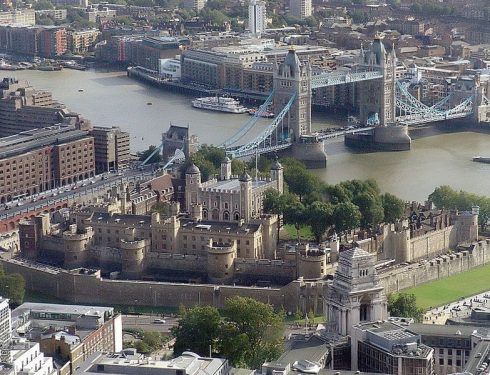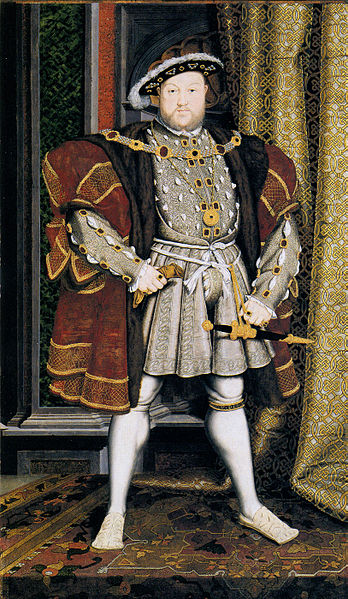Blessed Margaret Pole
Countess of Salisbury, martyr; born at Castle Farley, near Bath, 14 August, 1473; martyred at East Smithfield Green, 28 May, 1541.
She was the daughter of George Plantagenet, Duke of Clarence, and Isabel, elder daughter of the Earl of Warwick (the king-maker), and the sister of Edmund of Warwick who, under Henry VII, paid with his life the penalty of being the last male representative of the Yorkist line (28 Nov., 1499).
About 1491 Henry VII gave her in marriage to Sir Richard Pole, whose mother was the half-sister of the king’s mother, Margaret Beaufort. At her husband’s death in 1505 Margaret was left with five children, of whom the fourth, Reginald, was to become cardinal and Archbishop of Canterbury, and also the indirect cause of his mother’s martyrdom.
Henry VIII, on his accession, reversed her brother’s attainder, created her Countess of Salisbury, and an Act of Restitution was passed by which she came into possession of her ancestral domains: the king considered her the saintliest woman in England, and, after the birth of the Princess Mary, Margaret of Salisbury became her sponsor in baptism and confirmation and was afterwards appointed governess of the princess and her household. As the years passed there was talk of a marriage between the princess and the countess’s son Reginald, who was still a layman. But when the matter of the king’s divorce began to be talked of Reginald Pole boldly spoke out his mind in the affair and shortly afterwards withdrew from England.
The princess was still in the countess’s charge when Henry married Anne Boleyn, but when he was opposed in his efforts to have his daughter treated as illegitimate he removed the countess from her post, although she begged to be allowed to follow and serve Mary at her own charge. She returned to court after the fall of Anne, but in 1530 Reginald Pole sent to Henry his treatise “Pro ecclesiasticæ unitatis defensione”, in answer to questions propounded to him in the king’s behalf by Cromwell, Tunstall, Starkey, and others. Besides being a theological reply to the questions, the book was a denunciation of the king’s courses. Henry was beside himself with rage, and it soon became evident that, failing the writer of the “Defensio”, the royal anger was to be wreaked on the hostages in England, and this despite the fact that the countess and her eldest son had written to Reginald in reproof of his attitude and action.
In November, 1538, two of her sons and others of their kin were arrested on a charge of treason, though Cromwell had previously written that they had “little offended save that he [the Cardinal] is of their kin”, they were committed to the Tower, and in January, with the exception of Geoffrey Pole, they were executed. Ten days after the apprehension of her sons the venerable countess was arrested and examined by Fitzwilliam, Earl of Southampton, and Goodrich, Bishop of Ely, but these reported to Cromwell that although they had “travailed with her” for many hours she would “nothing utter”, and they were forced to conclude that either her sons had not made her a sharer in their “treason”, or else she was “the most arrant traitress that ever lived”. In Southampton’s custody she was committed to Cowdray Park, near Midhurst, and there subjected to all manner of indignity. In May Cromwell introduced against her a Bill of Attainder, the readings of which were hurriedly got over, and at the third reading Cromwell produced a white silk tunic found in one of her coffers, which was embroidered on the back with the Five Wounds, and for this, which was held to connect her with the Northern Uprising, she was “attainted to die by act of Parliament”. The other charges against her, to which she was never permitted to reply, had to do with the escape from England of her chaplain and the conveying of messages abroad. After the passage of the Act she was removed to the Tower and there, for nearly two years, she was “tormented by the severity of the weather and insufficient clothing”.

An aerial view of the Tower of London. Bl. Margaret Pole is buried inside the Royal Chapel of St Peter ad Vincula, which is at the first tower (of the five towers on the outerwall) on the right.
In April, 1541, there was another insurrection in Yorkshire, and it was then determined to enforce without any further procedure the Act of Attainder passed in 1539. On the morning of 28 May (de Marillac; Gardner, following Chapuys, says 27) she was told she was to die within the hour. She answered that no crime had been imputed to her; nevertheless she walked calmly from her cell to East Smithfield Green, within the precincts of the Tower, where a low wooden block had been prepared, and there, by a clumsy novice, she was beheaded.
DE CASTILLON AND DE MARILLAC, Correspondance politique; MORRIS in The Month (April, 1889); CAMM, Lives of the English Martyrs, I (London, 1904), 502 sqq.; GARDINER in Dict. Nat. Biog., s. v. Pole; GILLOW, Dict. Eng. Cath., s. v.
BLANCHE M. KELL (Catholic Encyclopedia)
Nobility.org Editorial Comment: —
God’s law comes first.
Honor is an inextricable element of nobility, and it assigns priorities to our loyalties. God and His Law come first, followed by the Church established by Our Lord (in things spiritual) and the King or the State (in things temporal) as these are the two perfect societies, each sovereign in its own field, then institutions such as one’s family, and so forth. When Henry VIII abandoned the Catholic faith and forced his nation to follow along, ultimately he was demanding that these priorities be altered. Breaking off all submission to the Vicar of Christ on earth, he usurped the leadership of the Church in England. This was a dishonor that St. Margaret Pole and many others refused to follow, and thus she earned the palm of martyrdom for her fidelity to the Faith.
Of interest:












